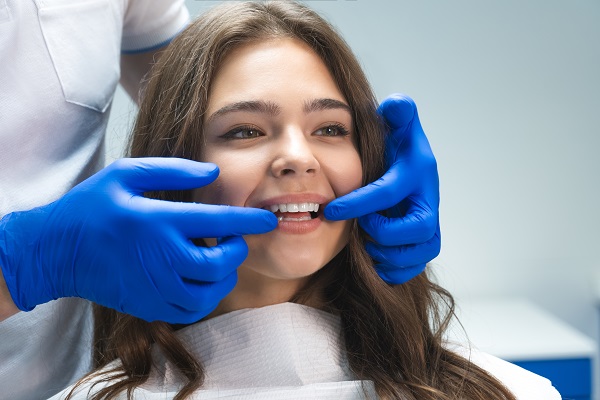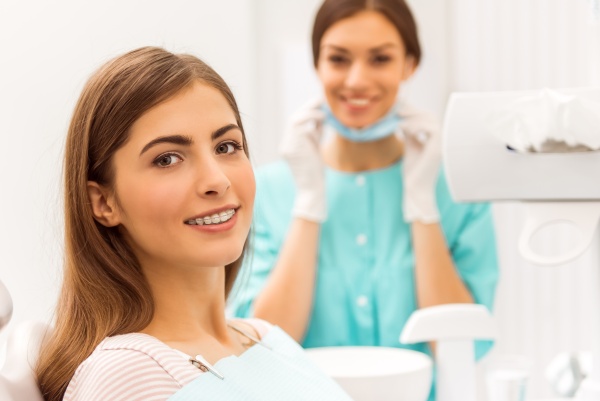TMJ TreatmentStockton, CA
Treatment for temporomandibular joint disorder can provide effective, noninvasive therapy to reduce discomfort. With proper treatment and care, TMJ does not have to be severe or long-lasting. TMJ treatment involves the use of an oral device that both provides the patient with pain relief and corrects the underlying issues.
TMJ treatment is available at Brookside Orthodontics in Stockton and the surrounding area. Though in some cases the symptoms of TMJ go away on their own, in many others, they persist. When this is the case, Christopher D. Parker, DDS, MS may recommend a treatment plan that involves the use of an oral appliance coupled with exercises and lifestyle changes the patient can do at home.
If you live with jaw pain or discomfort or otherwise are experiencing the symptoms of TMJ disorder, know that the condition does not have to be forever. With professional care, you can achieve jaw comfort once more. Call us at 209-732-1124 to schedule a consultation today.
The Basics of TMJ Treatment
While there are several options, using an oral device is a noninvasive, nonintrusive, and effective way to treat temporomandibular joint disorder. This type of TMJ treatment involves a device similar to an orthodontic retainer. The device stabilizes a patient’s bite and prevents contact between the teeth. When the teeth rest against the device, they should be in the least harmful and most correct position.
The Benefits of TMJ Treatment
There are several benefits of wearing an oral device to treat TMJ. The most obvious is to reduce symptoms. According to the Mayo Clinic, TMJ disorder can involve several uncomfortable, sometimes painful, and life-interfering symptoms:
- Jaw pain or tenderness
- Aching pain in or around the ear
- Dull facial pain
- Difficulty or pain while chewing
- Difficulty opening or closing the mouth
Many times, the first signs of TMJ disorder are grating clicking sounds or sensations when opening and closing the jawbone. Individuals may not experience pain or discomfort at first, though an orthodontist may recommend exercises or at-home remedies to correct the condition before it grows worse.
An oral appliance can help relieve painful symptoms by preventing the harmful behaviors that cause them. The appliance reduces pressure on the jaw joints and surrounding muscles. It also prevents wearers from grinding or clenching their teeth, two habits that contribute to the development of TMJ disorder.
The Treatment Process
Before beginning TMJ treatment, our orthodontist needs to perform an assessment of the patient’s mouth and make a confirmed diagnosis. There is no specific test to confirm the TMJ disorder. Instead, according to WebMD, the professional listens to the patient’s symptoms, observes the range of motion of the jaw, listens for clicking or grating sounds coming from the mouth, and presses along the jaw to find areas of pain or discomfort. In some cases, an orthodontist may need to send the patient to a specialist for image testing.
If observation and imaging point to temporomandibular joint disorder, the orthodontist may recommend an oral appliance. If this is the case, they can take physical or digital impressions of the patient’s teeth and send them to a lab. As the American College of Prosthodontists explains, the dental lab then makes a custom oral appliance that fits in the patient’s mouth. The exact fit is essential to the effectiveness of the treatment.
Once the custom appliance is complete, the patient returns to the office to test for fit. Some adjustments may be needed. Then the orthodontist sends the patient home with the appliance and instructions for how to use it.
Proper Care for an Oral Device
Proper care of an oral appliance is necessary to keep the device in tiptop shape and, therefore, effective. Taking care of the device is easy and entails remembering a few simple instructions:
- When not wearing the device, store it in room-temperature conditions
- Keep the appliance out of reach of small children and pets
- Clean the device with water, not toothpaste, as toothpaste is abrasive and may damage it
- Store the device in water when it is not in the mouth to keep it from drying out and cracking
- Never use hot water on the appliance, as hot water can cause it to warp
- Brush and floss as normal to prevent the buildup of plaque on the teeth
Follow-Up Care
Christopher D. Parker, DDS, MS may recommend frequent follow-up appointments immediately after the final fitting. These appointments are necessary to assess the effectiveness of the device and monitor the patient’s overall oral health. To get started on your treatment today, call Brookside Orthodontics at 209-732-1124 and find relief for your jaw pain.
Frequently Asked Questions
What lifestyle changes may an orthodontist recommend to treat TMJ disorder?
At-home care and lifestyle changes can help to speed up recovery for TMJ disorder. Self-care can involve massaging around the jaw bone, using a combination of rest and exercise, and applying ice or heat. Lifestyle changes often include avoiding gum chewing, avoiding salty foods, and practicing stress-relief techniques.
How do you know if TMJ treatment is necessary?
If the symptoms involve no more than a clicking or popping sound when moving the jaw, you may be able to manage and resolve the issue on your own. However, once you begin to experience discomfort or pain, it may be time to see an orthodontist. A dental professional can assess your symptoms and determine an appropriate course of treatment.
What causes TMJ disorder?
TMJ disorder can occur for a variety of reasons. Grinding or clenching the teeth, physical injuries, infections, dental surgery, and arthritis can all lead to the condition. So, too, can genetics or hormonal changes.
What is the outlook for TMJ treatment?
For most people, the outlook is good. When patients wear the oral device as instructed and care for both the appliance and their teeth, the condition is likely to disappear. However, every patient’s prognosis is unique, and some patients may require additional treatment.
How can you prepare for your TMJ treatment appointment?
Start by documenting the condition. Make a list of all the symptoms you experience, as well as when you started to experience them. If you have been experiencing higher-than-usual levels of stress, tell the orthodontist. Also, make a note of any medication or supplements you take, as some may interfere with oral health.
Contact Us
Brookside Orthodontics is located at
3427 Deer Park Dr Ste D
Stockton,
CA
95219





